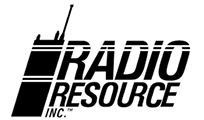Factors to Consider When Looking at Radio Coverage

There are many different factors that come into play when trying to get adequate radio coverage for your facility. Here are a few basic things to look at when trying to assess coverage:
- What type of frequency are you using?- Most commonly in licensed business band, companies will either go for VHF or UHF frequencies. VHF frequencies are better for line-of-sight operation like farming and some outdoor use (depending on topography). UHF frequencies are better for indoor applications because they can penetrate walls, steel, concrete, etc. better.
- What size antenna are you using?- When it comes to handheld radios you most likely are given the option of a stubby or a whip (longer) antenna. In most situations, the whip antenna will give you 5%-20% better coverage. Results will vary based on facility size.
- Are you using a repeater?- Handheld radios typically run anywhere from 2-5W. Wattage equates to power, or coverage that the radios will give you. A repeater unit helps "repeat" the signal at a higher power, giving you greater coverage. Most standard repeaters run around 40-50W.
- Analog or Digital?- Most all radios that are produced in 2021 can be ran in either analog or digital. By running your radios in digital, you'll more than likely find better voice quality and enhanced coverage.

